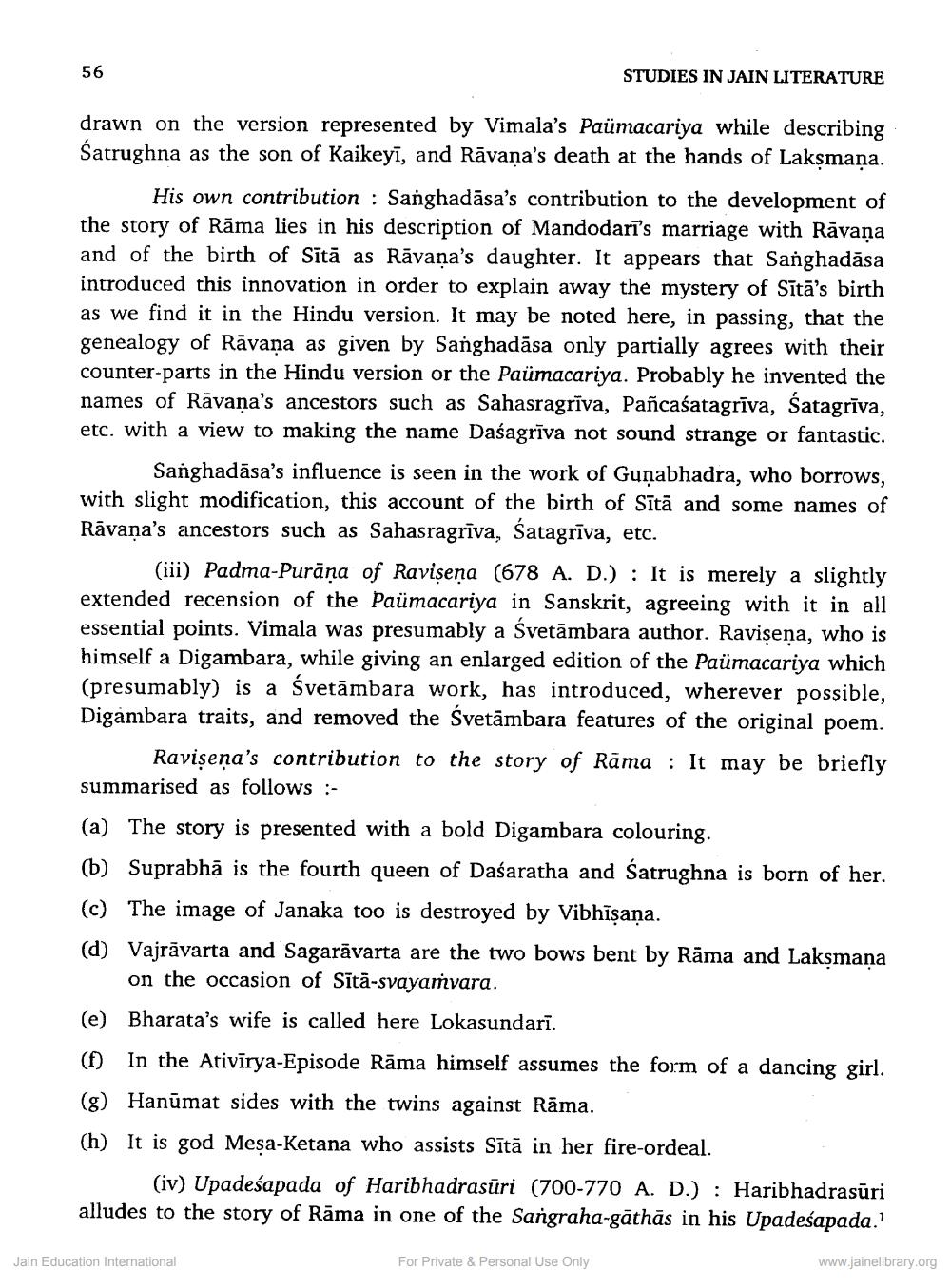________________
56
STUDIES IN JAIN LITERATURE
drawn on the version represented by Vimala's Paümacariya while describing Satrughna as the son of Kaikeyī, and Rāvana's death at the hands of Laksmana.
His own contribution : Sanghadāsa's contribution to the development of the story of Rāma lies in his description of Mandodarī's marriage with Rāvana and of the birth of Sītā as Rāvana's daughter. It appears that Sanghadāsa introduced this innovation in order to explain away the mystery of Sītā's birth as we find it in the Hindu version. It may be noted here, in passing, that the genealogy of Rāvana as given by Sanghadāsa only partially agrees with their counter-parts in the Hindu version or the Paümacariya. Probably he invented the names of Rāvana's ancestors such as Sahasragrīva, Pañcaśatagrīva, Satagrīva, etc. with a view to making the name Daśagrīva not sound strange or fantastic
Sanghadāsa's influence is seen in the work of Guņabhadra, who borrows, with slight modification, this account of the birth of Sītā and some names of Rāvana's ancestors such as Sahasragrīva, Satagrīva, etc.
(iii) Padma-Purana of Ravisena (678 A. D.): It is merely a slightly extended recension of the Paümacariya in Sanskrit, agreeing with it in all essential points. Vimala was presumably a Svetāmbara author. Ravişena, who is himself a Digambara, while giving an enlarged edition of the Paümacariya which (presumably) is a śvetāmbara work, has introduced, wherever possible, Digambara traits, and removed the Svetāmbara features of the original poem.
Ravişeņa's contribution to the story of Rāma : It may be briefly summarised as follows :(a) The story is presented with a bold Digambara colouring. (b) Suprabhā is the fourth queen of Dasaratha and Satrughna is born of her. (c) The image of Janaka too is destroyed by Vibhīşaņa. (d) Vajrāvarta and Sagarāvarta are the two bows bent by Rāma and Lakşmaņa
on the occasion of Sītā-svayamvara. (e) Bharata's wife is called here Lokasundarī. (f) In the Ativīrya-Episode Rāma himself assumes the form of a dancing girl. (g) Hanūmat sides with the twins against Rāma. (h) It is god Mesa-Ketana who assists Sītā in her fire-ordeal.
(iv) Upadeśapada of Haribhadrasūri (700-770 A. D.): Haribhadrasūri alludes to the story of Rāma in one of the Sangraha-gāthās in his Upadeśapada.
Jain Education International
For Private & Personal Use Only
www.jainelibrary.org




